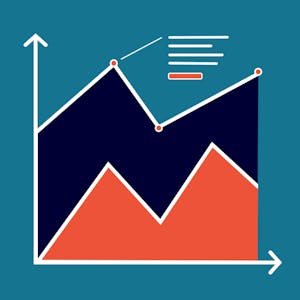Visualization for Data Journalism
While telling stories with data has been part of the news practice since its earliest days, it is in the midst of a renaissance. Graphics desks which used to be deemed as “the art department,” a subfield outside the work of newsrooms, are becoming a core part of newsrooms’ operation. Those people (they often have various titles: data journalists, news artists, graphic reporters, developers, etc.) who design news graphics are expected to be full-fledged journalists and work closely with reporters and editors. The purpose of this class is to learn how to think about the visual presentation of data, how and why it works, and how to doit the right way. We will learn how to make graphs like The New York Times, Vox, Pew, and FiveThirtyEight. In the end, you can share–embed your beautiful charts in publications, blog posts, and websites.This course assumes you understand basic coding skills, preferably Python. However, we also provide a brief review on Python in Module 1, in case you want to refresh yourself on the basics and perform simple data analysis.
None
Syllabus
Syllabus - What you will learn from this course
Week 1
Course Orientation
Module 1: Visualization in Newsrooms
In this module, you will become familiar with the course, your classmates, and the learning environment.
Week 2
Module 2: Data and Visual Perception
This module starts with a summary of the history and emerging trends of data visualization in journalism. You will then explore various types of charts and compare their pros and cons. By doing so, you will be able to recognize a wide variety of graphical forms and evaluate their capabilities/shortcomings as well as what situations each chart type is typically used in storytelling. We will also go through the classic reading by Edward Tufte, The Visual Display of Quantitative Information, and learn how to locate and articulate errors and deception in data visualization.
Week 3
Module 3: Narrative Storytelling
In this module, we will first look at some examples of successful data visualizations in journalism. We will then drill down on numbers, learning the process of transforming data into information. Next, we will explore theories in visual perception and concepts in visualization and familiarize ourselves with the visual channel ranking—a useful guideline in designing news visualizations. You will evaluate pre-attentive attributes and why they are important in visualizations. You will also have hands-on practice to learn how data wrangling helps us make informed decisions.
Week 4
Module 4: Cognitive Load and Color Perception
In this module, we will learn about the frameworks and techniques that can be used to integrate visualizations into a narrative. You will examine the role messaging and interactions play in drawing readers into a story package that contains greater detail. For the hands-on exercise, you will start creating graphs in Python. You will apply design theories and concepts you previously learned to build line charts, bar charts, and scatter plots.
Week 5
Course Conclusion
FAQ
When will I have access to the lectures and assignments?
Access to lectures and assignments depends on your type of enrollment. If you take a course in audit mode, you will be able to see most course materials for free. To access graded assignments and to earn a Certificate, you will need to purchase the Certificate experience, during or after your audit. If you don't see the audit option:
What will I get if I purchase the Certificate?
When you purchase a Certificate you get access to all course materials, including graded assignments. Upon completing the course, your electronic Certificate will be added to your Accomplishments page - from there, you can print your Certificate or add it to your LinkedIn profile. If you only want to read and view the course content, you can audit the course for free.
Is financial aid available?
Yes. In select learning programs, you can apply for financial aid or a scholarship if you can’t afford the enrollment fee. If fin aid or scholarship is available for your learning program selection, you’ll find a link to apply on the description page.
Reviews
Comprehensive course to helping us how to use data for journalism as well as will help us in understanding data in newspapers.
Thanks very much for great content and the instructor did a great job, and her materials were very use helpful and relevant! Great experience!
Well organised and with a lot of commitment from the faculty. I would like to see deeper discussions on most of the topic in the future. Thank you
I truely enjoyed the contents and teaching in this online course. It's very helpful for my projects as an intern in journalism. Thanks so much, Dr. Ng. Amazing course.
